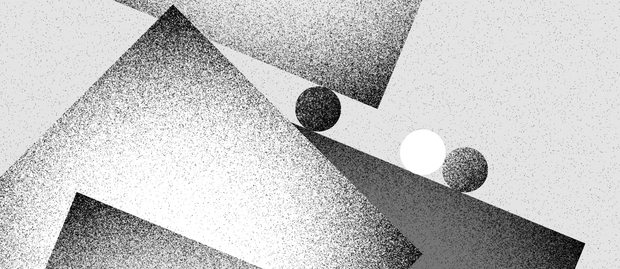
Art Nouveau Artists. The Rise of Artistic Freedom
What is nouveau art?

Art Nouveau, a French term meaning "New Art," is a style that emerged in the late 19th century as a reaction against the Industrial Revolution's rigid academic craft forms and mass production. It represents a movement that sought to combine beauty and functionality, transforming everyday objects into masterpieces. This nouveau art style was characterized by its organic forms, intricate patterns, and materials such as iron, glass, and ceramics. Art nouveau artworks are easily recognizable by their flowing, sinuous lines that mimic the natural world, with motifs often drawn from plants, flowers, and even human figures.
At its core, modern style was an attempt to elevate decorative crafts to the level of fine pieces, blurring the boundaries between them. The art nouveau definition is not merely confined to one medium; it spans architecture, illustration, interior design, jewelry, and more. The movement was an international phenomenon, manifesting itself in various forms across Europe and the United States. Its impact was so profound that it influenced subsequent movements, laying the groundwork for modernism.
The history of art nouveau is rich with innovation, as artists and designers sought to create a unified aesthetic that permeated all aspects of life. From the streets of Paris to the galleries of Vienna, the influence of nouveau artworks can still be felt today. Its emphasis on harmony between form and function, as well as its dedication to craftsmanship, set it apart from other movements of its time.
What Is the Art Nouveau Movement?
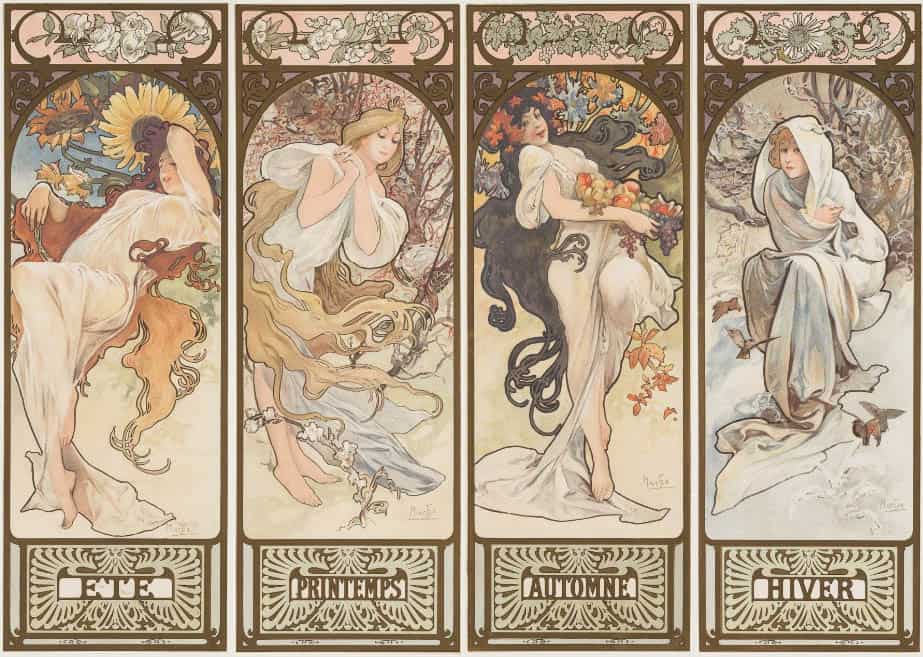
The art nouveau movement was born out of a desire to break free from the historical styles that had dominated craft and design for centuries. It began in the late 19th century, roughly between 1890 and 1910, and quickly spread across Europe and North America. This era was marked by a growing disillusionment with the Industrial Revolution, as mass production led to a decline in the quality of craftsmanship. In response, art nouveau artists sought to revive decorative artworks by emphasizing the importance of design and the use of high-quality materials. The influence of Art Nouveau can be seen in subsequent movements, including Art Deco, which inspired American Art Deco artists such as Joseph Christian Leyendecker and Maxfield Parrish.
One of the most significant characteristics of the nouveau movement was its embrace of natural forms and motifs. Artists drew inspiration from the organic world, incorporating elements such as flowing water, plants, and the human body into their works. This connection to nature is evident in the illustrations and drawings of the period, which often feature elongated, curving lines that create a sense of movement and fluidity.
The movement was also characterized by its focus on graphic design, particularly in the realm of advertising and poster pieces. Art Nouveau graphic design was known for its intricate, decorative borders and the use of bold, stylized text. These works were not just functional; they were also visually striking, often incorporating vibrant colors and elaborate patterns.
Another hallmark of the art nouveau movement was its holistic approach to design. Artists and designers sought to create environments where every element, from the furniture to the architecture, was aesthetically cohesive. This can be seen in the art nouveau architecture of the time, where buildings were designed to be total works of craft, with every detail carefully considered. The movement's emphasis on design extended to everyday objects as well, with art nouveau artists creating everything from jewelry to furniture that was both beautiful and functional.
Art Nouveau Artist — a New Aesthetic
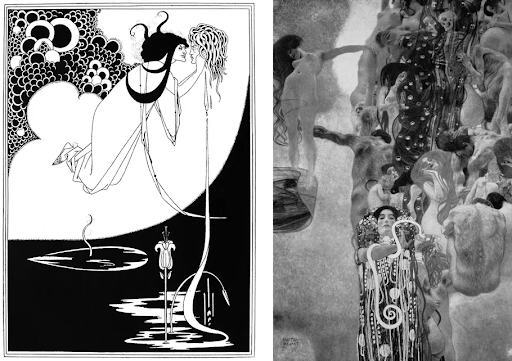
The art nouveau artist was at the forefront of a creative revolution, bringing to life the art nouveau style through their innovative works. These artists were not only painters but also designers, architects, and craftsmen who sought to elevate decorative artworks. Their contributions were instrumental in defining the nouveau art style and setting it apart from other artistic movements.
- Alphonse Mucha, a Czech painter and illustrator, is one of the most iconic nouveau artists. His works are characterized by their idealized female figures, ornate decorative elements, and flowing lines. Mucha's art nouveau paintings and posters, particularly those created for the actress Sarah Bernhardt, are quintessential examples of the movement's focus on beauty and design. His use of soft, pastel colors and intricate patterns has made his works enduring symbols of the style.
- Gustav Klimt, an Austrian painter, was another key figure in the art nouveau movement. His works, such as "The Kiss," are known for their use of gold leaf, rich textures, and symbolic imagery. Klimt's paintings often feature elongated figures and elaborate patterns, reflecting the movement's emphasis on sensuality and decoration. His works are not only masterpieces of the Modern style but also serve as bridges to the emerging modernist craft movement.
- Hector Guimard was a French architect and designer who played a significant role in bringing this style to the streets of Paris. His most famous works include the entrance designs for the Paris Métro, which are iconic examples of art nouveau architecture. Guimard's designs are characterized by their organic forms, flowing lines, and attention to detail, making him a central figure in the Nouveau movement.
- Louis Comfort Tiffany, an American artist and designer, was a leading figure in the Art Nouveau movement in the United States. He is best known for his works in stained glass, particularly his Tiffany lamps, which are iconic examples of art nouveau artworks. Tiffany's designs are characterized by their use of vibrant colors, intricate patterns, and natural motifs, making them enduring symbols of the movement's emphasis on craftsmanship and design.
These famous art nouveau artists were instrumental in defining the art nouveau style and bringing it to life. Their works continue to inspire and influence contemporary artists and designers worldwide.
Contemporary Art Nouveau Artists — view of XXI century
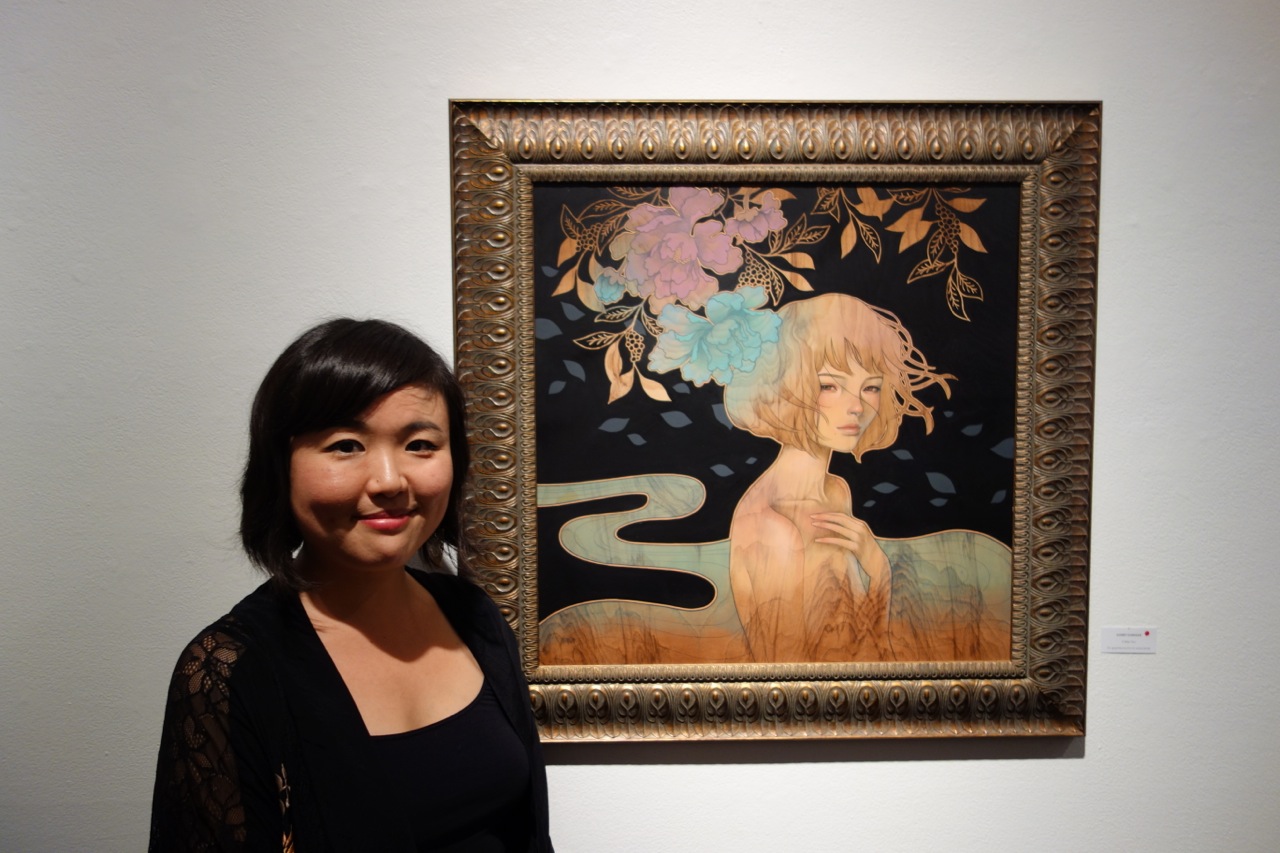
While the original Nouveau movement peaked in the early 20th century, its influence has persisted, inspiring a new generation of artists to revive and reinterpret this classic style in contemporary artworks. Contemporary Art Nouveau artists, with their innovative spirit, blend traditional Nouveau characteristics—such as flowing lines, organic forms, and nature-inspired motifs—with modern techniques and materials.
Contemporary artist Audrey Kawasaki, for example, draws on Nouveau influences in her ethereal paintings, where delicate female figures are entwined with intricate botanical patterns. Her works often feature the sinuous lines and organic forms that are hallmarks of Art Nouveau, yet with a modern, almost surreal twist.
Another prominent figure in the contemporary Art Modern scene is David Delamare, who carries the style forward with enchanting illustrations. His works evoke the era of Nouveau with his detailed designs and elegant compositions, yet he incorporates a contemporary sensibility that makes them accessible to today's audience.
These artists continue to explore the themes of beauty, nature, and craftsmanship, ensuring that the style remains vibrant and relevant in the modern era. Their works can be found in galleries around the world, where they draw admiration for their ability to merge the old with the new, keeping the spirit of Nouveau alive in the 21st century.
Art Nouveau Examples
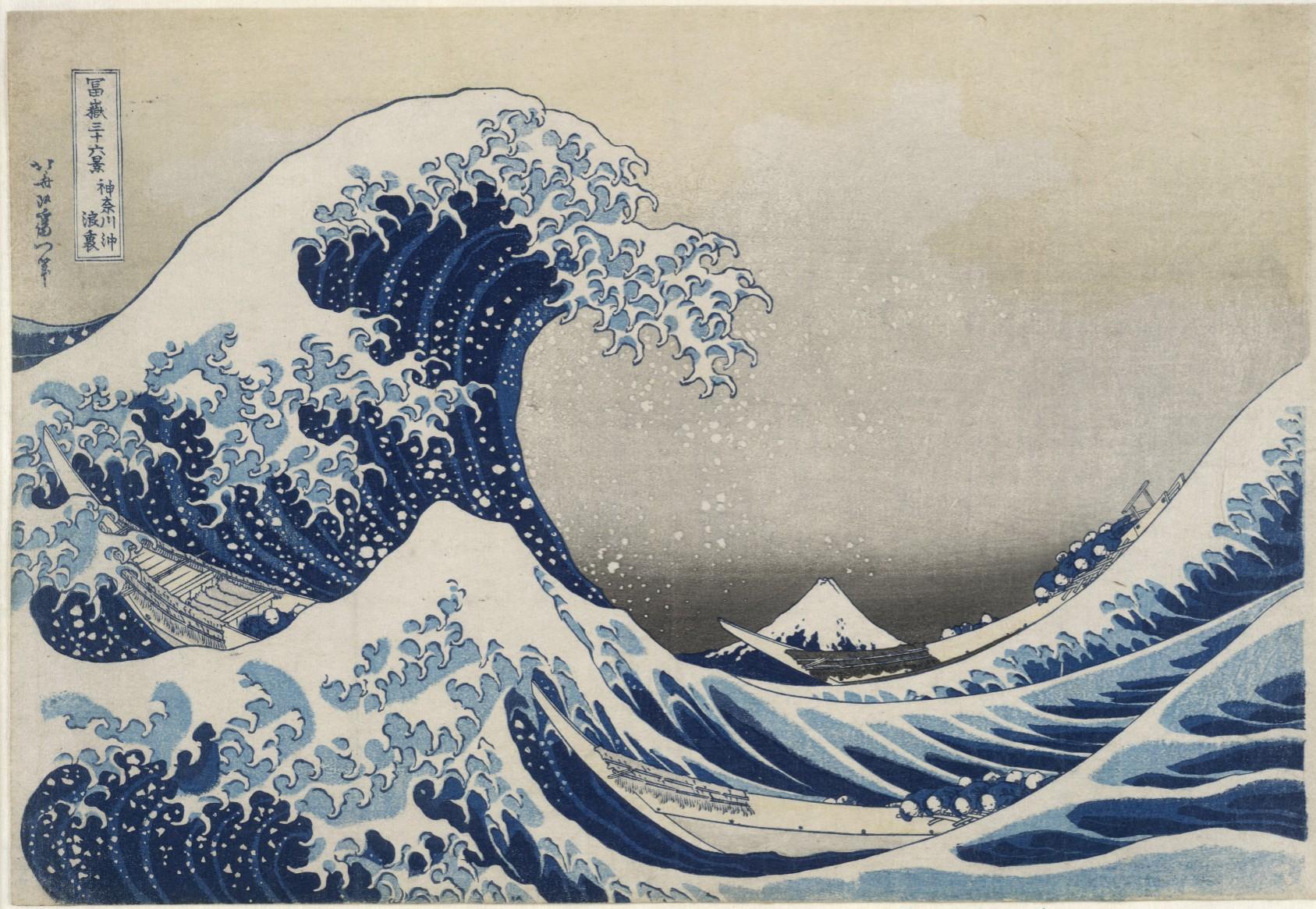
The art nouveau style can be seen in various art forms, from architecture to graphic design to everyday objects and famous art nouveau paintings or black and white art nouveau works, all of which bring the style to life.
- Casa Batlló in Barcelona, Spain: Designed by the renowned architect Antoni Gaudí, Casa Batlló is a masterpiece of art nouveau architecture. The building's undulating facade, inspired by natural forms, is adorned with intricate ceramic tiles and ironwork, making it a true masterpiece. The interior of the building is equally stunning, with its organic shapes and flowing lines creating a sense of harmony and unity.
- The Paris Métro Entrances: Designed by Hector Guimard, the iconic Paris Métro entrances are quintessential examples of art nouveau design. Their flowing lines and organic forms perfectly capture the essence of the art nouveau movement. These entrances have become symbols of Paris and remain a testament to the movement's focus on beauty in everyday life.
- The Secession Building in Vienna, Austria: Designed by Joseph Maria Olbrich, the Secession Building is an important example of art nouveau architecture. The building's striking facade and ornate gold dome reflect the movement's emphasis on decoration and symbolism. Inside, the building houses
- Alphonse Mucha's Posters: Mucha's posters, particularly those featuring actress Sarah Bernhardt, are iconic examples of art nouveau graphic design. His use of decorative patterns and idealized female figures became synonymous with nouveau artworks. These posters were both advertisements and artworks of their own right, contributing to the movement's goal of integrating craft into everyday life.
Famous Art Deco Painters
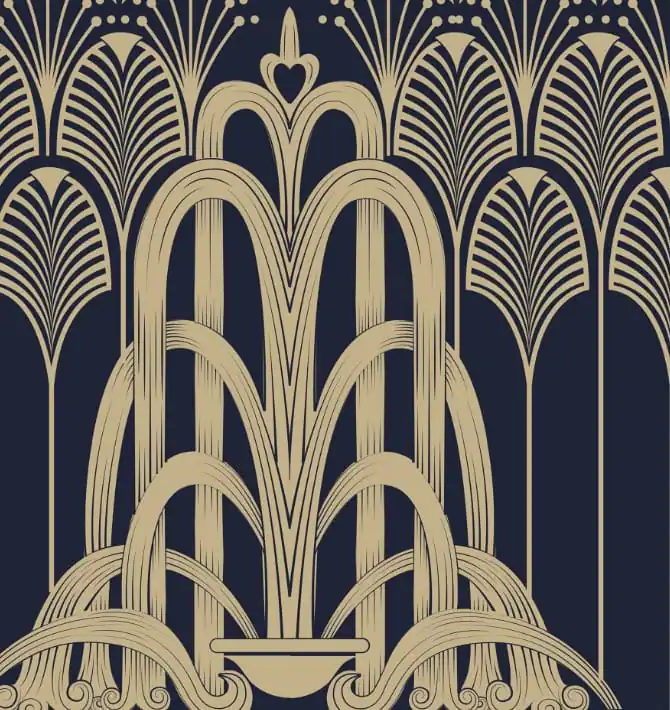
As the art nouveau movement began to wane in the early 20th century, a new style emerged to define the modern age: Art Deco. This style responded to the more elaborate and ornate Art Nouveau, emphasizing geometric shapes, bold colors, and luxurious materials. This movement gained prominence in the 1920s and 1930s, reflecting the era's fascination with modernity, technology, and progress.
- Tamara de Lempicka, a Polish painter, is one of the most famous art deco artists. Her works are characterized by their sleek, geometric forms and glamorous subjects, often depicting the wealthy and fashionable elite of the time. De Lempicka's paintings are iconic examples of Art Deco artwork, reflecting the movement's focus on modernity, luxury, and style. Her use of bold colors and stylized figures has made her one of the most celebrated artists of the Deco era.
- Jean Dupas, a French painter and designer, was known for his large-scale murals and tapestries. His works often featured stylized, elongated figures and were heavily influenced by classical craft and mythology, bridging the gap between Art Nouveau and Art Deco. Dupas's paintings and designs are prime examples of the movement's emphasis on decoration and symbolism, making him a key figure in the transition.
- Émile-Jacques Ruhlmann was a renowned French furniture designer and decorator, known for his luxurious Deco works. His designs were characterized by their use of exotic woods, lacquer, and inlay, reflecting the movement's focus on luxury and craftsmanship. Ruhlmann's works were highly sought after by the wealthy elite, and he is considered one of the most important Deco designers of the 20th century.
These famous artists were instrumental in shaping the Art Deco movement and defining the style of the early 20th century. While often mistaken for one another, Art Nouveau and Art Deco represent distinct paths within the evolution of modern artworks. However, both movements share a common ground in their reflection of the eras in which they emerged and have had a profound influence on visual artworks. By embracing the prevailing cultural atmosphere and addressing contemporary issues, both Art Nouveau and Art Deco have significantly shaped the visual landscape we encounter today.
Related articles


